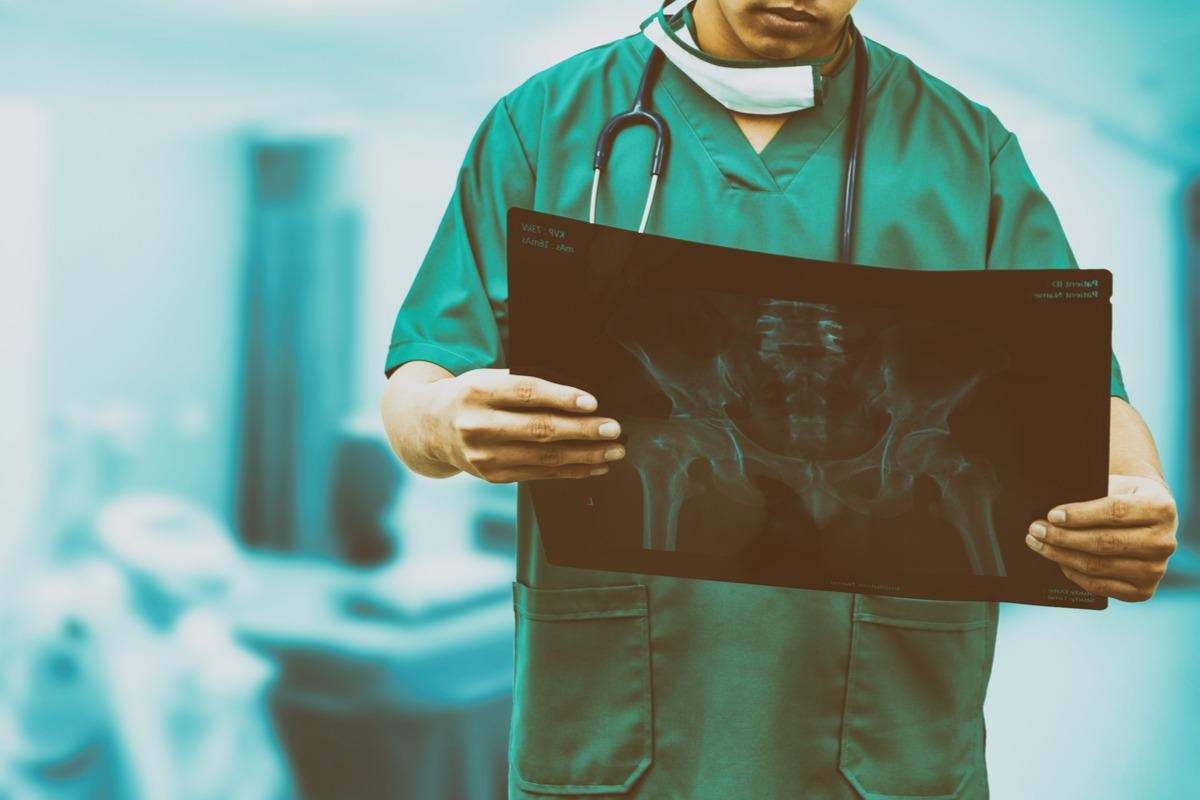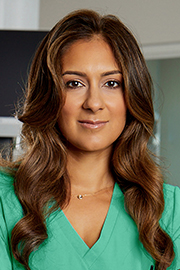Reviewed by Danielle Ellis, B.Sc.
Written by Keynote Contributor, Dr. Pamela Mehta, M.D.
Challenges in conventional orthopedic treatments
You never know when you might need to see an orthopedic surgeon. From cradle to casket, accidents and injuries are an inevitable part of life, with your joints worse off for it. Even if you can avoid accidents, wear and tear in your joints can lead to arthritis, with an estimated 150,000 knee and hip replacements performed in the US every year, predicted to triple by 2040.
While the young and fit can recover from injuries with conventional treatment, we might find our joints don't respond the same way as we age. Tissue such as cartilage, ligaments, and tendons have very little capacity to regenerate and heal by themselves, which worsens as we age. We often resort to joint replacement and invasive procedures to fix our joints when our bodies cannot.
Traditionally the choice is between conservative management – physical therapy, mobility aids, steroid injections, and surgical procedures, including joint replacement. Conservative measures may be less effective, but invasive surgery comes with pain and medical risks. With the conventional treatment model, the question becomes – should you risk your health or your mobility?

Image Credit: Blue Planet Studio/Shutterstock.com
Regenerative medicine – the solution?
Regenerative medicine is a new field of medicine in which orthopedic surgeons aim to move away from replacement and toward joint preservation. Using orthobiologics, we can provide your body with the cells, materials, and stimulation it needs to heal without you ever going under the knife.
Taken at face value, this seems to be an ideal solution to all of our problems. The promise of regenerative medicine in orthopedics is a future where a joint replacement can be delayed for as long as possible, perhaps offering a solution to long transplant waiting lists for other disciplines of medicine. However, as with any new form of treatment, regenerative medicine isn't without controversy. The main debate in orthobiologics is whether the body of evidence currently supports incorporating regenerative medicine techniques into national guidelines and conventional treatment strategies.
Case studies and anecdotal evidence often support orthobiologics (biological substances orthopedics surgeons can use to help the body heal) as a treatment option. However, the size and consistency of available studies are still a problem. There is plenty of evidence to support regenerative medicine techniques in specific circumstances such as osteoarthritis and tendinopathy. Still, a broader evidence base will be required before these treatments are accepted as standard practice in wider orthopedic circles.
What is Regenerative Medicine?
We also can't expect larger studies to prove these therapies to be efficacious, with some meta-analyses only showing marginal effectiveness of plasma-rich plasma and advising against its use as a conservative treatment.
The history of regenerative medicine
The idea behind regenerative medicine isn't new. The earliest story detailing the body's regenerative capacity comes from Greek mythology around the god Prometheus, who was punished for stealing fire and giving it to humanity. Prometheus was chained to a rock for Zeus' eagle to eat his liver, day after day, with his liver regenerating overnight. This story leads us to believe that the ancient Greeks were aware of the liver's capacity to regrow and regenerate at this point in history. In orthopedics, the first known "regenerative" procedure came in 500 BC, where Roman soldiers with joint locations were treated with hot needle therapy.
Modern orthopedic therapies in regenerative medicine have developed over the past 80 years, focusing on modifying the healing response in the body. In the 1940s, Magnuson described a treatment for osteoarthritis by extensive debridement of the knee. This well-established treatment was later replaced by therapies including inducement of healing by irritation to the joint via injection of saline (prolotherapy - Hackett et al. 1956), drilling into arthritic cartilage (Pridie 1959), and micro fracturing cartilage (Steadman 1984).
More recently, regenerative medicine has focused on the implantation of cells to initiate healing in musculoskeletal structures, with the introduction of modern interventions such as platelet-rich plasma, mesenchymal stem cells, and injections of biomaterials that can induce a healing response.
Regenerative medicine and orthobiologics in 2022
Modern orthopedic regenerative medicine treatments still struggle to find a place within standard practice and large healthcare organizations, owing to the debate over whether the evidence base currently supports its use. Therapies such as platelet-rich plasma and adipose (fat cell) derived stem cell injections often require patients to pay out of pocket as insurance companies refuse to cover these forms of treatment.

Image Credit: Lightspring/Shutterstock.com
There is, however, a growing number of practitioners who use orthobiologics as part of their standard practice. With a growing evidence base, these practitioners have started to treat conditions such as osteoarthritis and tendinopathy in this way, offering treatments including injection of:
- Platelet-rich plasma - blood plasma with a high concentration of platelets taken from the patient's blood.
- Mesenchymal stem cells - stem cells sourced from fat tissue, bone marrow, and pregnancy-related sources such as the umbilical cord, amniotic fluid, and the placenta.
- Biomaterials - biological substances such as autologous chondrocytes (cells taken from the patient which produce cartilage), bovine collagen, bone matrix, and proteins.
These orthobiologics are generally considered conservative treatments, meaning they are used as a less invasive alternative to surgery or as an additional option when other treatments have failed.
The popularity of orthobiologics is increasing, in no small part due to media coverage of famous athletes undergoing these procedures - Tiger Woods, Steph Curry, and Raphael Nadal, to name just a few. This may have added to the controversy surrounding regenerative medicine. In these circumstances, therapies were used to treat injuries and aid post-surgical healing - an area with less research backing.
If the goal is to move away from joint replacement and surgical management of joint conditions, we aren't there yet. Nonetheless, you can certainly expect to see the use of orthobiologics expand and advance over the coming decade.
The future of regenerative medicine
Regenerative medicine holds the promise of delaying and possibly reducing surgical intervention in patients with degenerative joint conditions and musculoskeletal injuries. In the near future, we may see orthobiologics used as a middle-ground for conditions like arthritis, sitting somewhere between conservative treatment (such as steroid injection) and surgery.
In the far future, we may even see a complete overhaul of how we replace joints - moving away from metal and ceramic joint replacements towards biological replacement and regeneration. We can also expect a move towards orthobiologic injection as a preventative measure for degenerative joint conditions.
There are a few hurdles to overcome before orthobiologics can truly take a place among conventional treatments. Some of these hurdles are political and scientific - dealing with the controversy behind stem cell research and the lack of a solid foundation of evidence. Other hurdles include difficulties in advancing currently available treatments to enhance symptom improvement, long-term efficacy, and safety. We still face difficulties in how we can store stem cells, rapidly grow cells for grafting, and prepare the musculoskeletal system for implantation and regeneration of new tissue.
What's clear is that regenerative medicine is an exciting and promising field that may hold the key to both expanding the range of minimally-invasive treatment options available and managing or even curing conditions that our current therapies cannot.
References
- Singh, J. A., Yu, S., Chen, L., & Cleveland, J. D. (2019). Rates of Total Joint Replacement in the United States: Future Projections to 2020–2040 Using the National Inpatient Sample. The Journal of Rheumatology, 49(4). https://doi.org/10.3899/jrheum.170990
- Borakati, A., Mafi, R., Mafi, P., & Khan, W. S. (2018). A Systematic Review And Meta-Analysis of Clinical Trials of Mesenchymal Stem Cell Therapy for Cartilage Repair. Current Stem Cell Research & Therapy, 13(3), 215–225. https://doi.org/10.2174/1574888x12666170915120620
- Johal, H., Khan, M., Yung, S.-H. P., Dhillon, M. S., Fu, F. H., Bedi, A., & Bhandari, M. (2019). Impact of Platelet-Rich Plasma Use on Pain in Orthopaedic Surgery: A Systematic Review and Meta-analysis. Sports Health, 11(4), 355–366. https://doi.org/10.1177/1941738119834972
- Tang, J. Z., Nie, M. J., Zhao, J. Z., Zhang, G. C., Zhang, Q., & Wang, B. (2020). Platelet-rich plasma versus hyaluronic acid in the treatment of knee osteoarthritis: a meta-analysis. Journal of Orthopaedic Surgery and Research, 15(1). https://doi.org/10.1186/s13018-020-01919-9
- Fei, X., Lang, L., Lingjiao, H., Wei, C., & Zhou, X. (2021). Platelet-rich plasma has better mid-term clinical results than traditional steroid injection for plantar fasciitis: A systematic review and meta-analysis. Orthopaedics & Traumatology: Surgery & Research, 107(6), 103007. https://doi.org/10.1016/j.otsr.2021.103007
- Miller, L. E., Parrish, W. R., Roides, B., & Bhattacharyya, S. (2017). Efficacy of platelet-rich plasma injections for symptomatic tendinopathy: systematic review and meta-analysis of randomised injection-controlled trials. BMJ Open Sport & Exercise Medicine, 3(1), e000237. https://doi.org/10.1136/bmjsem-2017-000237
- Franchini, M., Cruciani, M., Mengoli, C., Marano, G., Pupella, S., Veropalumbo, E., Masiello, F., Pati, I., Vaglio, S., & Liumbruno, G. (2018). Efficacy of platelet-rich plasma as conservative treatment in orthopaedics: a systematic review and meta-analysis. Blood Transfus, 16(6), 502–515. https://doi.org/10.2450/2018.0111-18
- Vaish, A., Murrell, W., & Vaishya, R. (2020). History of regenerative medicine in the field of orthopedics. Journal of Arthroscopic Surgery and Sports Medicine, 1(1), 154–158. https://doi.org/10.25259/jassm_12_2020
- Magnuson, P. (1974). The classic: Joint debridement: surgical treatment of degenerative arthritis. Clin Orthop Relat Res, 1974 Jun(101), 4–12.
- George Stuart Hackett, Hemwall, G. A., & Montgomery, G. A. (1991). Ligament and tendon relaxation (skeletal disability) treated by prolotherapy (fibro-osseous proliferation). Institute In Basic Life Principles.
- Pridie, K. (1959). A method of resurfacing osteoarthritis knee joints. J Bone Joint Surg Br, 1959(41), 618–619.
- Steadman, J. R., Briggs, K. K., Rodrigo, J. J., Kocher, M. S., Gill, T. J., & Rodkey, W. G. (2003). Outcomes of microfracture for traumatic chondral defects of the knee: Average 11-year follow-up. Arthroscopy: The Journal of Arthroscopic & Related Surgery, 19(5), 477–484. https://doi.org/10.1053/jars.2003.50112
- Mao, A. S., & Mooney, D. J. (2015). Regenerative medicine: Current therapies and future directions. Proceedings of the National Academy of Sciences, 112(47), 14452–14459. https://doi.org/10.1073/pnas.1508520112
About Dr. Pamela Mehta, M.D
Dr. Pamela Mehta is a board-certified orthopedic surgeon in San Jose, CA, and the founder of Resilience Orthopedics. She is an expert in the treatment of sports injuries and osteoarthritis, and in modern regenerative medicine therapies.
Dr. Mehta graduated from the University of Southern California with honors in 2006. She was given the Order of the Palm and Laureate, and the Order of Arete, during her undergraduate and medical studies - both awarded for excellence in leadership, academics, and service.
She went on to complete her residency at Columbia University where she trained under Dr. Louis Bigliani, the inventor of the modern shoulder replacement. Since then, she worked for large healthcare organizations in California for 5 years, before founding her own orthopedic practice - Resilience Orthopedics in San Jose. During her career, Dr. Mehta has had the privilege of being the Chief of Orthopedic Surgery and National Orthopedic Director for a large orthopedic hospitalist group, as well as serving as a medical advisor to various companies including @FIGS and @TheGoodFeetStore.
Disclaimer: This article has not been subjected to peer review and is presented as the personal views of a qualified expert in the subject in accordance with the general terms and conditions of use of the News-Medical.Net website. Dr. Mehta does not have any conflicts of interest to declare.